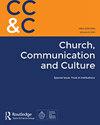The interaction between ‘history’ and ‘story’ in Roman historiography: the rhetorical construction of the historical image of Nero
Q1 Arts and Humanities
引用次数: 0
Abstract
Abstract This paper examines the way in which ancient historiography makes use of rhetorical and even fictional devices (dramatic poetry as well as the novel) to dramatize in writing down events which the historians obviously consider as being important for their judgement, ideologically or otherwise biased, of historical personalities. An outstanding example for this narrative method is the Roman author most often thought of as one of the greatest historians in all antiquity: Tacitus. It can be shown that he in those of the books of his Annals which concern the reign of Nero makes use of rumours, insinuations and even fictional elements, especially of the ancient novel and novella (examples for this will be taken mostly from Ann. XIII–XVI), and particularly with regard to Nero’s relationship with his mother, Agrippina.罗马史学中“历史”与“故事”的互动:尼禄历史形象的修辞建构
摘要本文探讨了古代史学如何利用修辞甚至虚构的手段(戏剧诗和小说)来戏剧性地写下历史学家显然认为对他们判断历史人物(无论是在意识形态上还是在其他方面)很重要的事件。这种叙述方法的一个杰出例子是罗马作家塔西陀,他经常被认为是古代最伟大的历史学家之一。可以看出,他在《编年史》中那些关于尼禄统治的书中,利用了谣言、含沙射影甚至虚构的元素,尤其是古代小说和中篇小说(这方面的例子大多取自安十三–十六),尤其是关于尼禄与母亲阿格里皮娜的关系。
本文章由计算机程序翻译,如有差异,请以英文原文为准。
求助全文
约1分钟内获得全文
求助全文
来源期刊

Church, Communication and Culture
Arts and Humanities-Religious Studies
CiteScore
1.30
自引率
0.00%
发文量
14
审稿时长
21 weeks
 求助内容:
求助内容: 应助结果提醒方式:
应助结果提醒方式:


